Jamie Jean Schneider DommDigital Strategist, Social Media + Big Data, North American Division IntroductionHumanity has been asking existential questions forever. We’re wired for purpose, constantly seeking to answer the big question, “Why?” Although a record-breaking number of believers are leaving brick-and-mortar churches in America, every month, over 100,000 people go on Google and type into the search bar, “Is God Real?” Countless others search for Bible study tools. Our neighbors are asking Siri, not a pastor, “What happens after death?” or profoundly, “What is faith?” The world is going digital, but should the church? The answer is that the gospel should go to all the world, using whatever tools and gifts we have. The eyes of people are on screens, especially the youth. The church must be equipped to go where people’s attention is focused—to be in the world, but not of it. In this free handbook, we’ll demonstrate how to use social media networks for ministry and evangelize to young adults ages 18−30.
Jamie Jean Schneider DommDigital Strategist, Social Media + Big Data, North American Division If you can track it, you can measure it. As a result, you can gain a better understanding of your audience and their behavior, helping you adapt your strategies to more effectively reach them. Taking the time to review the performance of your digital communications and platforms enables you to better understand what is working and what needs to be changed, which empowers you to shape your digital communications strategy based on data. In the long run, this will save both time and money while maximizing impact. Avoid data paralysisTime is valuable. Don’t get so caught up in the details of the data that you respond too late and miss an opportunity. Aim to stay ahead of the curve and be proactive instead of reactive in your strategies. Most ministries and churches do not have the luxury of a dedicated analytics team, but you don’t need to dive too deep to get valuable information about how your website and campaigns are performing. Since most ministries are new to digital communications and analytics, we’re going to stick to a high-level overview. Go back to those key performance indicators we discussed in the strong foundations section, and use those as a guide for what to track based on your ministry’s goals. Take the time to familiarize yourself with the terminology of the various data points. Most analytics tools define their terms within the platform. You can usually access these definitions by hovering your cursor over the question mark next to the data category. The data that is most important to your efforts will be:
Compare the information you find to the performance goals and metrics you established. Always look for areas of improvement and adjust accordingly. Communicate with everyone involved by:
Use trackable links (a.k.a. UTM codes)UTM codes are segments appended to a URL that enable data platforms like Google Analytics to record information about website visitors and traffic sources. This is vital for social media managers as it enables you to measure and prove social media success or, alternatively, identify problems and adjust your strategies. Creating trackable links is surprisingly easy to do and will give you valuable insights into how well your digital communications and ads are performing. What is a UTM code? UTM = Urchin Tracking Module Example: https://www.SDAdata.org/?&utm_campaign=DigitalGuide-2020&utm_source=Social-Media UTM codes can be used in links shared via:
Creating your own trackable links A trackable link has five building blocks:
Example: URL – https://www.sdadata.org/digital-discipleship-and-evangelism.html Campaign – DigitalGuide-2020 Source – Social-Media Put it all together using this formula: Regular link + ?&UTM + Campaign (what event, month, where, etc.) + &UTM + Source (channel/platform) Final result: https://www.sdadata.org/digital-discipleship-and-evangelism.html?&utm_campaign=DigitalGuide-2020&utm_source=Social-Media Be sure to always test your links! After you create your trackable link, be sure to test it to make sure it works. It can be very frustrating for your audience to receive digital content with a broken link. Website performance dataThe most common analytics tool for detailed website performance tracking is Google Analytics. Google Analytics is a free tool for monitoring where your visitors come from and understanding how they interact with your website. It’s easy to set up a free Google Analytics account. Most website hosting platforms offer easy-to-follow directions to get you started. Once you are set up, take the time to familiarize yourself with the tool and make it a habit to check your website’s analytics each month. Terms and definitions
Key metrics to monitor
Campaign performanceWhen you drill down deeper under campaigns, you can learn what aspects of a campaign performed the best by using unique UTM campaign names for the different components of your communications strategy. Google Analytics automatically picks up the campaign name and source from the tracking links. There is no need to do anything in Google Analytics to make this work! Just be consistent with the UTM codes you use, and be clear with your campaign and source names. Remember, prioritize. You don’t have time to track everything, nor do you need to! Once you have determined what you’re going to track to determine whether or not you’re reaching your goals, check performance monthly, and record your results in a way that enables you to see trends over time. Some analytics tools like Google Analytics allow you to create dashboards for easy access, while social media insights may require that you create your own charts and graphs. To learn more about Google Analytics, check out our beginner tutorial on SDAdata.org. Social media analytics or insightsMost social media platforms offer at least basic insights into the performance of a ministry’s account and who their audience is. Take the time to familiarize yourself with the analytics for your social media platforms and regularly check them to understand trends over time. Pay particular attention to:
Social advertising performance analyticsAfter you place your ads, don’t wait until the campaign is over to check performance. Monitor the ads closely to make changes and optimize as needed. Catch problems early on; otherwise, your money may go to waste. The great thing about social advertising is that you can edit campaigns at any time if they are not meeting your expectations. Make sure you understand what the numbers mean; most platforms have descriptions available in pop-ups next to the column head. Be sure to:
Some basic terminology you should know:
Track so that you can learnRemember, if you’re going to take the time to put together a campaign strategy, take the time to track its performance so you can be better informed next time. There’s no point in testing strategies without tracking your efforts. If you don’t learn from your campaign, you can’t improve the next one. Social media and digital marketing are both an art and a science. Use data to inform your intuition.
Jamie Jean Schneider DommDigital Strategist, Social Media + Big Data, North American Division Most local churches and ministries have limited budgets. To make the most of your limited ad dollars, build your advertising on top of your organic distribution mechanism. Paid ads are most successful when they are accompanied by strong digital distribution. They enable you to reach further than you can organically and to target specific groups of people for outreach efforts. Why spend any money when you can use the platforms for free? Social media platforms are businesses that need to make money; therefore, they limit unpaid reach. This means less than 5–10% of your fan base (depending on the platform) will naturally receive your posts in their news feed. You can counteract this by promoting key posts to reach more of your fan base and by placing ads to expand your reach to new audiences. To get started:
How much is appropriate to spend?A lot of people ask me, “How much does it cost to promote an event online?” But the beauty of social media ads is that the answer depends on what you can afford. Social media works very well for small budgets and non-profits. A little can go a long way, but it’s important to spend some money. As your confidence grows, and your familiarity with reaching your target audiences grows, you can increase your budget as needed. Ultimately, your budget depends on the size of your goals and your purpose. A small, local ministry may need to spend only $300 a year, whereas a nationwide campaign would need to spend at least $3,000 to create impact within a targeted audience. For all organizations, I recommend starting with a small ad budget and a clear objective that is easy to measure. This way you can learn and maximize your results as you grow. How can a small church or ministry fund their ad budget?Look for monies that can be redirected. Businesses that must balance their budgets or make a profit put most of their effort behind what is working. We should be just as shrewd. Too often, we pool our best resources and people into efforts with limited potential out of a misguided attempt to be fair or to meet accepted expectations. This will be different for every church or ministry, but it’s time to take a critical look at our programs. Determine your church’s strengths, and put all your efforts behind them. The Strength Finder (now CliftonStrengths) program operates on this premise for individuals and teams. We all love underdog or David and Goliath stories, where individuals or organizations overcome their weaknesses and beat the odds, but for most, thriving comes when we embrace what we are naturally good at. The underdog stories are typically outliers, and we should not operate under the assumption that we, too, are the exception to the rule. First, improve the functions required for your church’s operations, and put money behind keystone ministries with the most potential in the context of your membership and community. It might seem unfair to those ministries that don’t get as much support, but like the parable of the talents, you need to invest in the areas that are working the most effectively. Good stewardship means focusing on places where you can make an impact beyond day-to-day operations. Another option is to find individuals willing to fund social advertising as an outreach initiative or personal ministry. I personally fund and run my local church’s social media advertising and website hosting. Over time, our church leadership has learned the value and potential of using these digital technologies for a variety of purposes. Who should take responsibility for managing social advertising?Not every church is blessed with an experienced digital strategist, but this is an opportunity to allow a member with knowledge or interest in digital communications or marketing to develop their skills in a personal ministry that aligns with their abilities. If your church has staff, your communications lead can manage your ad account. This could also be a valuable skill for a younger member of your pastoral team to learn and take responsibility for. Either way, be sure to provide oversight so that expectations are clear, and the budget is respected. Do not place a single ad until you have a clear understanding of what you are trying to achieve and whom you are trying to reach. Types of adsAs of 2020, Facebook still has the most sophisticated social media advertising platform for small organizations. It enables detailed targeting for small budgets on Facebook, Instagram, and third-party websites. However, many of these ad types are also relevant to other platforms. The technologies and platforms may change, but these “types” will still be relevant, regardless of the platform. Choose the types of ads that align with the key performance indicators discussed in the strong foundations section of this guide. Here are the main types of ads that can be placed:
Basic targeting for social ads: |
|||||||
| Download the Creating Strong Social Media Posts Fillable Workbook | |
| File Size: | 1180 kb |
| File Type: | |
Examples:
Jamie Jean Schneider Domm
Digital Strategist, Social Media + Big Data, North American Division
While learning the rules and best practices of academic or journalistic writing creates a solid educational foundation, online writing requires a completely different style and approach to get the point across as quickly, clearly, and effectively as possible.
Copy that’s written for an online audience may seem too simple, even formulaic, since this type of writing is more casual and straight-forward. However, years of research proves its effectiveness in the digital space.
Bottom line: the goal of writing online content is to connect with the reader, not elevate the author. It’s about meeting the reader where they are and giving them the information they seek, all while “desiring their good” (sound familiar? MH, 143).
In other words, it’s not about us; it’s about those we are seeking to serve. As you read through this section, remember:
Good communication is when you communicate in a way your audience understands.
9 Principles for Writing Strong Online Content
Effective online writing has at least one of the following primary goals. This is especially true for content marketing/evangelism, which requires consistent production and distribution of quality content to attract, engage, and nurture an audience.
The four purposes are:
- To inform your readers about a topic of interest, providing new information—or old information—with a unique twist, new application, or original perspective. Aimed at providing value, this type of content makes the reader feel like they’ve become more knowledgeable because of engaging with your content.
- To educate your readers with answers to their questions or solutions to their problems. This can demonstrate authority while also providing a service to your audience. Most educational article titles start with “How” or “How to” or “Learn.” You can also use videos, quizzes, courses, step-by-step guides, checklists, eBooks, white papers, handbooks, reports, and more to provide your audience with educational content.
- To entertain people who are searching for something lighthearted to pass the time, or who need a pick-me-up. This type of content can even inform or educate in a fun way, but without demanding too much brainpower. Entertaining content is often viewed while on a commute (when the reader is not the driver!), in waiting rooms, between classes, on breaks at work, while waiting for an event to start, or on the couch, winding down after a long day. Here you’ll want to utilize forms of content such as quizzes, games, polls, short videos, memes, or humorous writing.
- To inspire your readers to take an action, such as changing a habit, sharing a post, registering for your event, signing up for a free resource, supporting your cause, or donating. Inspiring content targets emotions, stirring up feelings of agitation which could be positive (excited, emboldened) or negative (angry, shocked). However, this type of content must be used carefully. Emotional content performs poorly if the reader perceives it to be overblown or insincere. Always strive to be realistic and authentic. When possible, first test your content on a smaller audience before scaling up the reach of your articles or posts.
The best online writing is conversational, yet straightforward. Think about how you’d explain something new to someone you know, and write just like you would speak (minus tics, fillers, and mannerisms).
You wouldn’t waste time on flowery, poetic words, and you’d try to relate your concept to your friend’s life. You’d be up front about why this subject might be of interest and how it could benefit them in particular. The number one reason people share content online is because they feel it will improve the lives of others. As digital evangelists, our goal should be to create sharable content that benefits the lives of others. The Church should be a leader in creating content of this kind.
In addition, you shouldn’t spend a lot of time on technical details or bells and whistles, unless you know your friend is interested in that. Instead, you’d focus on how this topic will affect them personally.
The great part of writing targeted online content is that, as long as you’re clear about your topic, your demographic will already be interested in what you're writing about! After all, they have searched for topics mentioned in your articles or posts and decided your page is worth visiting.
Since your readers used a search engine, social media post, email message, or other website to get to your content, you don’t have to worry about convincing them that the topic itself is interesting. Your job is to convince them that you have information about their chosen topic that is better, deeper, more interesting, or more applicable than other sources. Ask yourself: what will the reader get from my content that they can’t get from someone else?
Getting to your point early—in the headline, subtitle, and opening paragraph—is key.
Think about that conversation with a friend. Have you ever been in a conversation where your counterpart struggled to get to the point? They’re over-explaining the peripheral details, giving too many examples or metaphors, or trying to come up with language that softens the blow of an edgy idea or uncomfortable topic instead of outright saying what they mean.
You’d quickly realize how much time is being wasted and you’ll wish you had asked someone else to begin with! That’s how an online reader feels when the content doesn’t get to the point. They’ll click “back” and go to the next link in the search results.
Tips for writing conversationally:
- Use:
- simple, easy-to-understand language.
- words with fewer syllables. Words with more syllables reduce readability.
- “you,” “your,” and “I.” This makes it seem like you’re speaking to your audience personally.
- active voice instead of passive voice.
- examples, similes, and metaphors (but don’t go overboard).
- contractions.
- Be sure to:
- tell stories. These are easy to remember and more engaging.
- keep it short and digestible. Break long sentences into several short ones. Long sentences will reduce readability. Blog posts, for example, should be no more than 800-1,200 words.
- ask questions.
- write to your target audience.
- And, finally:
- do not ramble.
- do not ramble.
Reaching your target audiences in a deep and emotionally compelling way is key to effective communication, powerful evangelism (marketing), and creating authentic connections. In the case of mission work and cause-based initiatives, strategic placement of key words can help facilitate deeper thought and increase impact on the reader, driving them to action.
The best headlines and teaser lines receive an “Emotional Marketing Value” (EMV) score of over 40. In other words, the best online writing incorporates high impact words in a way that is quickly understood by the reader and evokes an emotional response. We are after all, highly emotional beings, who often make decisions based on what directly affects us. In a world of competing priorities and overwhelming need, this can be a useful tool to help your message stand out among the digital clutter. Afterall, your message must be read in order to have impact.
The emotional richness of copy is evaluated based on three categories:
- EMV = 42.86%
- EMV = 50% for “Feeling defeated? Marriage is hard and you're struggling. We're here for you. Join us for a free seminar.”
Remember to also boldly make your claim up front, then use the rest of your content to back it up. If the point you’re making is a bit jarring, that’s not necessarily a bad thing. Plus, by getting to the point early, you tell your audience why they should prioritize your content over someone else’s. People are busy; state the value up front and then deliver on that promise.
Consider the idea of inspiring people by agitating emotional states:
People don’t do things because they’re comfortable. People don’t do things because they’re bored. People do things because they’re excited, outraged, empowered, inspired, shocked...
- Christofer Jeschke
- EMV = 50%
- EMV = 45%
The heart of copywriting is persuading readers to take an action.
Sometimes, when we think of marketing copy, we think about those spammy e-mail subject lines that over-promise and over-guarantee, or we cringe at clickbait headlines for videos or blog posts.
Well, if sales copy puts a bad taste in your mouth, keep in mind that you’re thinking of bad sales copy. When copywriting is done conversationally, with the reader’s feelings, interests, and beliefs/core values in mind, it can be incredibly effective. Remember, people are drawn to authenticity and honesty. Church messaging should always demonstrate the highest level of integrity.
Define the problem
Throughout a piece of writing, a reader is moved to action by introducing a problem that the reader needs to solve. They want something, they’re confused about something, or they don’t know the next step in a process.
You outline the problem, describe the implications of this problem, and then give them the solution—your resource, your solution, your method, your information, etc.
Benefits vs. features
When describing how great your resources/belief/method/service/information is, don’t just list its features—describe the benefits it will provide to your reader, and why those benefits are in their best interest. People want to know why before they take the time to understand the how.
For example:
“Buy our hibiscus tea!”
Why?
“Our blend has more antioxidants.”
Ok...what does that mean?
“Antioxidants decrease free radicals in your bloodstream.”
Ok...what does that mean?
“Antioxidants keep the cells in your body from breaking down!”
Ok...but what does that mean for me?
“Well, this tea has been shown to help lower high blood pressure, according to the American Heart Association’s 2008 study.”
That sounds pretty important. How does it taste?
“Great! Especially with honey!”
Well, all right then—why didn’t you say so?
When we’re personally invested in the subject of our writing, we can get lost in the details. Remember that the readers aren’t there yet. They need to see a connection between what they’re searching for and what you have to offer.
For example:
“You’ve been diagnosed with high blood pressure, and it can be tough to give up some of the foods and beverages you’ve enjoyed for years—like coffee, black tea, and soda.”
You speak the truth. It’s like you’ve been there, man!
“But what if there was a soothing hot drink that could be just as tasty, AND help lower your blood pressure at the same time?”
Is there? That would be so helpful right now! Tell me more!
Superperfect Tea Company offers premium hibiscus tea. And, according to a 2008 study by the American Heart Association, it lowers blood pressure in pre-hypertensive and mildly hypertensive adults.
I could use that! How does it taste?
This ruby-red herbal tea has a slight tart flavor reminiscent of cranberries. Add a little honey, and it delivers a light, tangy “bite” that can pick you up in the afternoon or calm you down in the evening.
Mmm. Can I try some?
Notice how the problem was outlined in the introduction, with the primary benefits immediately following. Meet the readers where they are, then tell how your amazing product is just what they need...and why.
Now, if we frame this in the context of ministry, your product is your message, which may be hope, wholeness, health, lifestyle, truth that answers their deepest longing, answers to their physical/spiritual needs, sound advice, and more.
Calls-to-action (CTA)
Once you’ve “sold” the product by connecting with your readers’ needs, it’s time to tell them to buy it! In ministry, this may mean subscribing to your newsletter, registering for a seminar or health clinic, coming to an event, or joining a small group dedicated to a particular topic.
Don’t leave them hanging. They want to take action, and the more clear and straightforward the call, the more likely they are to follow through.
You may have already imagined a call-to-action following the last line of the hibiscus tea conversation:
“Yes! Get 20% off your first box of tea when you order now!”
or
“Yes—get a free sample sent to you now!”
Copywriting isn’t complete without a call-to-action. It doesn’t have to be overly clever or cute; it just needs to make sense. Here are the most common calls to action that appear in online marketing:
- Order now!
- Download here.
- Watch this video.
- Join today!
- Donate to [insert organization name] & get a free travel mug!
- Listen now!
- Register now and get a free [insert item]!
- Start your free trial today!
- Secure your spot!
- Get the full version!
- Access exclusive information!
- Sponsor a child today!
- Book your appointment now!
- Find out if you qualify!
To share stories is human and approachable.
There is an old Jewish parable of “Truth & Story” where naked Truth traveled from village to village trying to find acceptance and love. In each village, Truth was mocked, ridiculed and ultimately chased away. Naked Truth was hated by all she encountered. From afar, Truth saw Story, dressed in beautiful robes, enter the village that had just rejected her. The people loved Story and praised her beauty, quickly embracing her. Story later found Truth crying far outside the village and asked what was wrong. Truth revealed her desire to be accepted like Story and shared the pain of her experiences. Taking pity upon Truth, Story shared some of her beautiful robes with her so that she was no longer naked. From then on, Truth and Story always traveled together, and everywhere they went, the people rejoiced and welcomed them.
Storytelling is a powerful means of communication online because:
Stories never tell us what to think, they give us something to think about. Stories don’t tell us what to feel, they cause us to feel.
Effective writing is both a science and an art. Yes, wordsmithing is a creative process, but copywriting is a science backed by research. A great way to add creativity to the elements of formulaic copywriting is through storytelling. People can’t help but be interested in stories. As humans, we want to know how things turn out!
For generations, storytelling has been the way people learn their history and connect. The Bible itself can be viewed as a collection of stories that draw people to God, teach us difficult truths, and connect us through a shared set of beliefs. To “win” souls, we, as a Church, must connect with a person’s experiences through stories. Not only is storytelling a powerful means of communication, but a vital tool for sharing a message of hope. Jesus told parables because truths revealed through stories are an effective way to reach people with thought-provoking topics that are easy to remember. We, like Jesus, should become expert storytellers.
Storytelling connects people and gets them engaged and interested in each other. The reason why people love watching movies and reading books is because we love to be immersed in stories. Social media is people connecting with people to create a collective human story. Our job is to frame that story within the context of our faith. We can provide answers and connection online users are looking for, if we’re strategic and intentional with what we write and the content we create.
Stories can be in the form of case studies, testimonials, video retellings, or simple anecdotes that describe how a person—just like the reader—struggled with a specific problem. Maybe they tried several things until finally discovering what really worked.
Where can you find real stories? As a ministry, you might already have them. Think of the people you’ve served. Think of the events you’ve held. Think of the testimonies your constituents have shared with you. How does their journey reflect a common need or experience within your target audience?
Going deeper, what analogies or metaphors can you draw from what you do? Can it be related to common daily life concerns? How does your ministry offer practical solutions?
Check out this article on finding marketing stories in everyday life.
Write down a story that you would share with your audience that could come across as relatable and relevant to their core values or needs.
While these terms are sometimes used interchangeably, they are different. Copywriting refers to the science, the persuasive writing formulas, the headlines, and the calls-to-action. Content writing could be considered the filler content that fleshes out the formulas for content marketing purposes: the stories, the details, the background information, the educational steps, or other valuable pieces of information you’re offering your reader.
In many ways these two elements of writing overlap and work together, and both occupy vital roles in the digital evangelism process.
There are increasingly specific definitions of these two terms across the internet, but the bottom line is that these writing styles and formulas work together to provide value to the reader, persuading them to stick around and, eventually, take action.
There are two primary categories to consider when crafting your overall website content: time-sensitive content and evergreen content.
While, indeed, simple concepts, when it comes to SEO, content marketing, and user experience, there are strategies to consider in the implementation of these two content types.
Announcements, breaking news, special offers or promotions, seasonal content, and events are time sensitive by nature. It’s good to have some time-sensitive information on your website and social media—if you consistently keep it up to date. It demonstrates to site visitors that your organization is active and aware.
It is more frustrating to go to a website/profile with out-of-date information than to go to a website/profile with no time-sensitive information at all. If an event from a couple months ago is still headlining, how can the visitor trust that the rest of your information is current?
Evergreen content, however, refers to elements on your page without an expiration date. It’s static content that doesn’t change (much) over time. It doesn’t need to. It’s written to stay relevant and useful to your audience regardless of when they read it.
For general website and social media copy, this evergreen content includes:
- About
- Services
- FAQ
- Archived posts or cornerstone articles
- Resources
- Testimonials
Effective messaging, whether you are publishing content regularly on a blog, posting on social media, or sending emails, requires new, helpful content to stay fresh and up to date. However, that doesn’t mean that each piece of content must be time-sensitive. You can cultivate them to be evergreen as well as timely.
To keep new content evergreen, the key is to stick with topics rather than dates.
While some of your social media or email content may contain time-sensitive information, they can link back to an evergreen blog post that covers a related topic thoroughly and that you periodically update as information changes.
To help your posts, pages, and articles stay evergreen in SERPs (search engine results pages), try removing the publication date from your post (unless it’s necessary). For the many seekers that check the date on webpages before clicking on them in search results, removing the date altogether can help present your content as timeless.
If you’re a church posting each week’s sermons as videos or podcasts, the first priority to keep these elements evergreen is to title each one topically rather than with the date of the service (i.e., “Teaching Your Kids to Pray” vs. “Sermon 4-25-17 on Prayer”). Note that you can still show the date in the subtitle or descriptions for members that search by date, but the title should be presented like a headline.
The topics covered in evergreen content must be “enduring topics,” discussing common experiences of the human condition (job interview best practices, dealing with grief and loss), timeless skills (how to pray, how to change a tire) or opinion/discussion pieces (which translation of the Bible is best?, is it better to exercise in the morning or evening?).
Additional ideas for effective evergreen content with examples:
- Case studies (“How Pathfinders Made Me More Confident”)
- Day-in-the-life posts or videos (“Shadowing a Pathfinder Director at Oshkosh”)
- Interviews (“Joe Smith, Pathfinder Leader for 40 Years, Tells Us His Best Stories”)
- Adapted livestreams (“Pathfinder Leadership Training—What Not to Do Skit”)
- Demonstration videos (“Advanced Knot Tying”)
- Topical blog post (“7 Ways to Deal With Rambunctious Kids”)
- Topical blog series (“Getting the Most Out of Oshkosh, Part 1 of 3”)
We’ve covered the different types of content that can be created to reach a variety of content consumers, as well as what makes content “evergreen,” or relevant past its publication date.
These principles can come in handy in the beginning stages of your SEO and content evangelism strategy and when it comes to repurposing content. Instead of creating a different piece of content for each platform you publish to, you can repurpose one core content piece to work across a variety of channels.
Here's an example of how you can make one blog post explode into ten different pieces of shareable content:
You, a nationally-renowned sandwich artist, wrote a winning post for your sandwich-making fans.
- Publish blog post on your website: “5 Creative Ways to Slice Sandwiches for Dazzling Hors D'oeuvres Trays.”
- Create teasers for your blog post for your followers on:
- etc.
- Create an infographic, illustrating the step-by-step process of each fancy slicing technique.
- Put together a slide deck for further details on each step of sandwich-slicing artistry.
- Announce this fantastic post to your email list.
- You could even create an exclusive autoresponder series (emails sent automatically to a mailing list based on specific rules/or subscriber behavior at defined intervals) that focuses even more in-depth on each of the five sandwich slicing methods.
- Host a webinar or a Facebook live video about the five slicing strategies for aspiring sandwich artists, with Q&A afterward.
- Turn that webinar into an evergreen video that will live on your YouTube or Vimeo channel.
- Host a podcast, where you gather with a fellow sandwich aficionado or two and discuss these five slicing techniques.
- Type up transcripts of the podcast discussion for those who prefer to read.
- Turn your feedback into more shareable content. Are you getting lots of comments on your blog post, your social media channels, or your videos? Did anyone submit ideas or questions? Publish a follow-up post or video that showcases your followers’ pictures of their own slicing results, blooper videos, or new discoveries. Or create a quick video to share tips about part of the third slicing method that your virtual protégés are having a tough time with.
Repurposing content can allow a specific topic to be discussed online longer by spreading out the publication of each repurposed item.
Furthermore, the same topic repurposed into ten different forms (example above) can create a bigger splash as it makes its online debut. This strategy creates more options for Google to index, increasing your chances of showing up prominently in search results, and it also allows your content to show up in the search engine results for various social media platforms as well.
(Titles, Tags, and Descriptions).
While seemingly small, these more technical areas of online writing can make a big difference in how Google views your site and in convincing people to click on your webpages and content in search results.
Title Tags
Sometimes called the “SEO Title,” this is the title that appears in search engines and what is displayed at the top of a browser tab when a reader opens your page.
For example, say you want to rank for the keyword/phrase “couples Bible study” and you thought of two SEO Title choices:
- Weekly Couples Bible Study - ThisTown Church
- Looking for a Bible study that caters to new couples?
Google would rank the first one over the second one because it would deem it more relevant and topic-centric. The second one is not a bad headline (save it for your H1!) but Google favors SEO Titles that are more direct.
Editing your page title in HTML code looks like this:
<head>
<title>THIS IS YOUR PAGE TITLE</title>
</head>
Otherwise, most content management platforms have a designated space to add or change a webpage’s title.
NOTE: If you already have significant traffic coming to your page with your current page title, even if it’s not optimized for the intended keyword, you might want to check your analytics before changing it. If visitors that come in through that page are staying on your site and clicking, downloading, buying, etc., you may want to consider keeping it the same, because you don’t want to lose that current traffic. If you notice that people are coming in through this page but then leaving the site, a title change could be highly beneficial.
Meta Tags or Meta Descriptions
This is the approximately 200-character teaser-like blurb that appears directly below the SEO title in search results. Often, this is what convinces the reader that your content is valuable.
Your meta description can be as long as you want, but Google will cut it off anywhere between 250-300 characters, depending on the amount of pixels those characters occupy.
While the recommendation used to be 160 characters, Google raised the number of permitted characters as of December 2017. It was changed again in the spring of 2018, then later adjusted to the current recommendation of 200 characters. In light of this apparent state of flux, aim to keep meta tags as short as possible while including the necessary information.
For example, if you’re selling vegan, gluten-free granola bars, you might want your meta description to say something like:
VEGLUFRE—A fast, tasty, healthy breakfast option! Packed with protein, fiber, vitamins, and minerals, our vegan, gluten-free granola bars make a great meal or snack. 5 flavors! Order in bulk & save!
Make sure to connect the benefits of your product, service, or idea/cause with the needs and interests of those you hope will click on your link. List a key selling point or two, then describe what they’ll find on the page and why it matters to them.
Most content management platforms will have an area for you to enter the meta description for each page, or you can install a WordPress plugin like Yoast that allows you to edit the entire meta description.
To enter a meta description straight into the HTML, the <meta> element will always go inside the <head> element. It will look similar to:
<head>
<meta name=”description” content=”THIS IS YOUR META DESCRIPTION”/>
</head>
NOTE: Every page should have its own unique meta description. Google notices if multiple pages have the same meta description, and many SEO auditing software programs will note redundant meta descriptions as an SEO error.
H1 Tags/Headers/Headings
This element of your page doesn’t typically show up in search engine results, but it is the first thing googlers will see after clicking on the page. To make sure they stay there, devote attention to creating effective headlines. Make sure to specify what they’ll find there and why they will want to continue reading.
Include some keywords in your headers, pinpoint a benefit your content offers, and give brief hints at what the content covers.
For example:
“Can’t decide which Bible translation to use? Learn the history of the differences between Bible translations”
or
“7 Ways to Simplify Complex Recipes for Easy, Healthy Dinners”
In the example below, “Coping with Depression” is the H1 tag, demonstrating how a keyword should used in the first three words. The subtitle, “Tips for Overcoming Depression…” has specific subtitle formatting, and the subhead “How do you deal with depression” lower on the page is formatted with the H2 tag.
This will typically make the text larger and bolded, or possibly a different font, depending on the theme or template you're using.
Each page should have only one H1.
For subtitles or subheadings, which are excellent for breaking up long text blocks and making the whole post more skimmable, content managers can use H2 or H3 tags, which will typically appear smaller than H1-designated text. H2 and H3 tags do not have an SEO impact, but can enhance readability.
If you can’t get into your content management platform at the moment and want to check how a certain paragraph is designated, right click on the page and select “View Page Source” to view the HTML code. You can also highlight the area, right click, and select “Inspect Element” on Macs.
This code-level text makes images searchable by Google. Also known as an “alt attribute” or “alt description,” this HTML tag is applied to an image on your webpage. It doesn’t show up on the page, but googlebots pick it up and use it to determine the topic depth of your page.
While Google can determine several aspects about images, Google won’t always “see” the message it’s intended to illustrate or support. To understand the content of the image, Google relies on ALT tags to determine what the picture is and how well it relates to the topic of the page, which impacts your ranking.
Additionally, ALT tags provide the image information for:
- Visually-impaired googlers using screen readers
- Those who can’t see images in their email or browser (if images or HTML is disabled)
Don’t make it too long, and make sure not to “keyword stuff” the ALT tag, an old “black-hat” SEO practice that Google will not favor and possibly penalize. For example, for the same image described above on the “sermon tips” page, keyword stuffing might look like: “megaphone sermon tips project voice sermon audience sermon strategies public speaking presentation methods.”
Add your ALT text into your content management system, or into the HTML by editing the source code:
<img src=”bluemegaphone.jpg” alt=”ALT TEXT HERE”/>
For example, in the picture on the previous page about coping with depression, this is how the ALT text appeared in the source code:
Using these seemingly-minor titles and tags can not only improve your SEO but also your user experience, enticing seekers to click on your site as they comb through search results for relevant information.
In summary:
- Your title tag answers the “what” questions of seekers. What is this page? What is it about?
- The meta description answers “why” they should click on it.
- The H1 tag answers a combination of “what,” “why,” and “how” by introducing the topic and foreshadowing what the content will offer seekers or how it will help them.
- ALT text helps Google know that images relate to the subject matter, indicating a more complete page. It also helps visually-impaired people learn what your page is about and what the images are, as they can be read by screen readers.
Jamie Jean Schneider Domm
Digital Strategist, Social Media + Big Data, North American Division
The currency of content marketing (or in our case, evangelism) is ACT: Authority, Credibility, and Trustworthiness (though we should also add “Empathy” to this list, especially when dealing with spiritual topics and life lessons).
Use multiple forms of content to maximize your organization’s ability to get picked up by Google’s search algorithms, as well as to further engage your audience. Keep in mind that certain forms of content will perform better with some audiences than others. By diversifying your content creation strategy, you optimize your reach and increase your impact across a variety of demographics.
Here are the four major components that work together in a comprehensive content creation process:
- Strategy – defining your ministry’s purpose, goals, and niche opportunities to target. Effective strategies outline topic coverage and evaluate means of distribution, measurement, and analysis.
- Copy – the words within the content. What messages are being conveyed to your audience? How can the language best reflect the culture of the medium and the target audience so that the desired meaning can be best understood? Remember, good communication is when we speak so that our intended audience can not only hear our message, but understand its intended meaning or purpose
- Imagery – the pictures, videos, icons, and graphics. What’s your visual theme? What emotional response or mood are your trying to evoke? What perception(s) of your brand will your audience develop of your brand based on the images you utilize?
- Medium/Media – The final home(s) for the copy and imagery content. Where will it live? On your website? In an app? On another website? On various social media platforms?
Most Popular Types of Online Content
The written word is the foundation of any type of content, and, therefore, this is where we must begin. Ideas are usually written down first—whether in the form of notes, scripts, or outlines—before they’re turned into anything else. Even in visual media like video, written content often accompanies and supports the other content types. When you set your content evangelism goals, you’ll want to prioritize quality writing.
Keep in mind, however, that good writing in an academic sense is not the same as what’s considered good content writing or copywriting. Writing for digital environments is much more straightforward, casual, conversational, and concise.
The most common forms of written content online are:
- Website copy, as in, the text found throughout your organization or ministry website. A thorough outline or bubble diagram is a must for planning out website content. Each page should have a clear purpose made obvious in the headline and introductory sentences. Typically, you’ll start with writing copy for the following standard pages: “Home,” “About,” “Services,” and “Contact Us.” You’ll expand from there, depending on your type of ministry.
The more high-quality content your website has, the more likely it is to show up in search results for topics related to your mission—especially if it has a blog. - Blogs, or a consistently-updated collection of topical articles. The word “blog” originally came from the word “weblog,” back when blogs were more like online journals for individuals posting their opinions or recipes, documenting their parenting journey, etc. Now blogs are used both individually and commercially to engage in conversation and as a means to inform (or persuade) readers.
Many blogs have inspired the formation of online communities, especially if they prominently link to their corresponding social media profiles on Instagram, YouTube, Facebook, Twitter, etc. Many commercial websites also leverage blogs to build or grow a community around brand values. If an organization’s blog contains useful or thought-provoking information, and is properly promoted, it can skyrocket in online influence. Often, this also increases audience conversions (taking a desired action). - Landing pages, or a stand-alone page dedicated to one important message, campaign, and/or call-to-action. It’s more than just a page where users happen to “land” after a search. Landing pages are where visitors are directed via a website link, social media post, paid advertising campaign, email button, etc., for the purpose of taking a specific action. A landing page is where a visitor would be directed to learn about a specific campaign, cause, or opportunity, and is designed to encourage them to get involved or sign-up for a special offer. The call-to-action would ask them to enter an email address (or other additional information) in exchange for something like
- a subscription to your newsletter on marriage.
- registration for a webinar or upcoming event on healthy eating
- the opportunity to sign up to meet with a local Bible worker or pastor
- a “lead magnet,” such as a free e-book (or physical book) on a topic of interest, such as “What happens when we die?
The primary purpose of landing pages should be to gather email addresses and other contact information for your marketing list, as well as analytic data on how many people are interested in what you’re offering. With the right promotional strategy, landing pages are valuable tools for growing your digital influence.
Landing pages can also help your organization increase registrations, sign-ups, downloads, purchases, etc. When applicable, build in “buzz” words that create a sense of urgency or exclusivity that urge visitors to take action or that make them feel special. - Email content. Email marketing is still a key player when it comes to optimizing your digital influence. While this content is not indexed by search engines, it serves a vital function in nurturing the relationship your ministry builds with its audience. It helps to grow an actively engaged digital following across multiple mediums and platforms, which does boost your SEO.
However, for your message to have an impact, your audience must first open your email. Strategically written subject lines are meant to convince the reader to open your email. And once they do, the email content should be written as concisely and in as straightforward a manner as possible, as you only have a matter of seconds to engage the reader and pique their interest.
Most email marketing content is in the form of e-newsletters that keep your community informed on news, events, resources, new content, etc. Emails may be notifications of new blog posts, or sometimes email campaigns can be an educational series in and of themselves.
Think about what you get in your inbox. Maybe you’re on an email list that sends you a daily devotional. Whatever type of email you receive, understand that careful thought (hopefully) went into how that content was presented. Email content is intentionally designed to keep readers engaged and feeling special so they don’t wander down to the footer to click “unsubscribe.” - Testimonials. This content features member/participant stories and testimonies that promote your mission, message, event, or cause. Storytelling remains central to evangelism because we’re drawn to the narrative of someone “just like us” experiencing a problem, seeking the right solution, trying this and trying that, and finally discovering how to overcome the problem.
Testimonials allow your ministry to be the “great discovery,” demonstrating that it can help people succeed and find a happy ending to their story. Around the testimonial, you can highlight your mission, what your ministry provides that others don’t, and give people a glimpse of what their lives would be like if they embraced your ideas or joined your faith community. - E-books. E-books educate readers (provide value) about a topic of interest. For an audience that might be looking for more depth, an e-book is a good option for going deeper than a blog or social media post allows. E-books can be terrific lead magnets as well. You can use landing pages to encourage people to sign up to receive e-books as well as physical books.
- Social media posts. Many organizations assign their best writers to engage with their followers on Twitter, Instagram, Facebook, LinkedIn, and various niche-specific platforms. Social media writing requires short, punchy messaging that encourages discussion, inspires shares, or includes an enticing call-to-action that directs to a landing page, blog, registration page, full video, etc. We’ll discuss more about how to write effectively for social media and online audiences in the next section.
Social media is today’s “word of mouth.” It’s the central hub of online conversations, and, if they want their posts read, liked, and shared, social media writers need to write in the word-of-mouth style, catering to the audience’s interests, frustrations, and convictions, and using strong, specific calls-to-action.
Social media “buzz” can dramatically increase your ministry’s web presence and impact. Not only is it a good source of active backlinks that can drive traffic to your website, your social media profiles can appear as additional search results as well—further elevating your findability online. - SEO titles and tags, such as page titles, headlines (or H1s), meta descriptions (the intro blurb that appears underneath the page title and link in search results), and ALT tags. All of these are priorities for SEO copywriters, as the content found in these areas can make a big difference in which webpages get clicked on and ranked in search results.
- Microcontent, or “scannable web copy,” which refers to headlines, subtitles, subheaders, lists, pull quotes, sidebars, meta descriptions, calls-to-action, etc. These are very important, and it’s actually an area that demands the most creativity from the writer. Its purpose is to make content more scannable, overcoming the “wall of text” issue that deters so many potential readers. More often than not, the microcontent is what convinces a reader to start reading and to keep reading.
- Transcripts for videos or podcasts. Some sites post them verbatim, while others optimize them for readability and add microcontent. This can make the transcript just as popular as the recording, especially for those (about 16% of web users) that prefer to read content. It is also highly valuable for making the content of the recording indexable for search engines. It is also a good way to promote accessibility for users that use screen-readers. Accessible content is valued by search engines.
- Checklists, as they can stand alone as their own type of post. They can appeal to hurried readers who love scannability, and to thorough readers who like the idea of a concrete list they can check off as they apply each step. Detailed checklists can also be effective lead magnets to the right audience, especially if your content teaches a complex process or provides ways to improve an existing skill or behavior.
One-third of all online activity is spent watching video. This isn’t surprising. People, as visual creatures, have been naturally drawn to online video and made it one of the most popular ways to consume content for all ages! The increase in mobile device usage has made video more popular as well. With a smaller screen, it’s easier and faster to watch videos than to read text.
Video is a great enhancer. Have you noticed that when you click on a news story, the page often has both the written article and the video from the newscast? Not only does it offer two different options for content consumption, it adds a perception of depth and authority to the story.
Video content is particularly useful for educational topics, especially “how-to” tutorials and telling stories. Demonstrations, interviews, personal testimonies, time-lapses...some things are just better presented via video.
When it comes to YouTube, this platform has created its own niche of search engine optimization. YouTube’s search algorithms rely heavily on keywords, titles, tags, thumbnail images, and microcontent such as video descriptions and channel descriptions.
YouTube also measures “watch time,” or how long a viewer watches before clicking away or going back to search results. The more of a video that gets watched, the better that video must be, so YouTube ranks it higher in its search results. Longer videos, especially if frequently watched until the end, get even more of a boost (on other social media platforms, however, it is still generally recommended to keep videos short, around three to five minutes or less).
With livestreaming, longer videos are always acceptable, regardless of platform. Livestreaming your events, whether on Facebook Live, YouTube, or your website, can widen your audience, further engage your existing audience, and provide an archivable piece of evergreen content that can be repurposed later. This is great for church services, special performances, programs at a school or university, conference sessions, and more.
When it comes to SEO, livestreams can have a sizeable effect. Facebook announced that its ranking algorithm favors live videos in its searches. YouTube promotes YouTube Live videos. And even if your organization’s livestreams are hosted off-site, it’s another link to your content that could show up in search results—especially if you’re live often!
Taking video up another notch, webinars are exclusive, live, educational presentations. Like its name suggests, it’s a seminar broadcast over the web using tools such as GoToMeeting, Zoom, or Lifesize. Participants are typically invited to webinars and provided with a private link.
While the webinar itself would not be indexed by search engines, its power to engage audiences boosts SEO through lead generation and by increasing engagement, trust, and loyalty to your ministry. Webinars can provide a valuable service to your constituents when used to teach useful information (such as tips to improve your marriage), provide background on a popular issue, or facilitate live online discussions. They can also be an effective and convenient way to host digital Bible studies for small groups, allowing face-to-face interaction and relationship building regardless of location.
While the right pictures can elicit emotion, the right designs can inspire action and highlight strategic details. Careful planning is necessary to make sure the images you’ve chosen indeed emphasize the intended emotion. It must be clear what the picture is portraying, and it should look genuine, as opposed to a cliché corporate stock photo.
Used sparingly, stock photography can be a great resource to enhance your ministry’s brand online, and it’s easy to find free stock images at pixabay, pexels, unsplash, and free-images.com. Click here for more free or low-cost stock photography and design resources.
For websites, hero images (the large, single images that dominate the top area of a website) continue to be trending. These pictures must be high enough resolution to avoid appearing pixelated (approx. 1600 pixels wide), but low enough resolution to avoid slowing down the site’s load time.
For other images that appear on your website, stick to file sizes under 250 kilobytes if possible. Learn more about image best practices for church websites.
For each image on your website, blog, or Instagram profile, make sure to apply ALT text, which is indexed by search engines to determine what the picture is about. It also acts as text that can be read by screen readers to tell visually-impaired internet users what pictures are on a page.
When explaining a process in text, an accompanying visual is a must.
If, when talking about your topic, you find yourself saying, “Here, let me show you…” or, “Why don’t I just draw this out,” an infographic would probably come in handy.
Infographics illustrate each step or point of a process and include short and straightforward text to accompany the imagery—making complicated information easier to understand.
Designers and writers must work closely to create an infographic with a clear direction so the eye knows what to read first and where to go next.
If you’re short a graphic designer, some free tools like Canva can help you create simple infographics, which add a splash of color to your page, post, or feed while informing and engaging your audience in a creative way.
As the below infographic explains, infographics don’t just make your page more pleasant to look at—people actually search for infographics on certain topics. They’re also shared frequently on social media. Think of creative ways to use infographics for ministry, such as mapping out “How to Study the Bible for Beginners.”
Audio content can include interviews, sermons, vocal essays, monologues, presentations, seminars, and more. Podcasts created from this audio content should be distributed as widely as possible, including on your website, iTunes, and other hosting platforms so users can subscribe. Even if you’re already hosting through a provider such as SoundCloud, Blubrry, Google Drive, or archive.org, it’s worth uploading to other hosting platforms in addition. These simple audio files are a highly shareable piece of content people can listen to while driving, walking, exercising, or cleaning their garage.
Having podcasts with your ministry’s name in the title, or hosted by a prominent personality associated with your ministry, can do wonders for brand awareness, which ultimately benefits overall SEO.
This type of content requires audience participation, making their interaction with your ministry far more memorable.
You’ve probably seen various character quizzes on Facebook or Twitter. They are highly shareable because, to the audience, it feels like they’re sharing information about themselves, not about the organization that designed the quiz.
Interactive content that strives to be helpful or practical might include assessment-type quizzes, calculators, interactive graphs or charts, or polls and surveys. They can also help you with demographic info-gathering for your ministry’s strategic planning. Remember, anything that deepens engagement also boosts SEO! It’s always beneficial to keep people on your website longer.
There are many tools that can help you create interactive content, including qzzr, SurveyMonkey, Doodle, Vizia, and more.
This type of content can be important for building what Google refers to as an organization’s E-A-T (Expertise, Authority, Trustworthiness). At the same time, courses provide yet another way for your audience to consume your content. If your organization is qualified to teach even a simple skill that has value in your audience’s life (healthy cooking or practical discipleship tips), creating courses can bolster your content marketing and SEO, and become a relevant resource for your site visitors. Not only can this type of content boost your credibility, it can empower your audience for positive change.
Beginning Content Strategy Worksheet
- Which topics do you wish to cover in-depth for your content evangelism?
- What goals and objectives do you have for your content evangelism?
- What keywords relate to your topic? Brainstorm below.
- Run your topic and keyword ideas through a keyword research tool. What kinds of results do you find?
- Are the terms you thought would be popular showing high search volume?
- Which keywords show the most favorable ratio of search volume to competition?
- Using what you’ve determined from your keyword research, what is the main topic that will guide your content development?
- List a few substantial subtopics that can branch out from your main topic.
- Create a “topic tree” or bubble diagram to outline your content’s topical progression.
- What possible content titles come to mind? Brainstorm below.
- For which of these subtopics would it be most useful to invest in a visual element, such as a video, infographic, or image?
- Which platforms best suit these topics and/or content types? Which platforms would best reach your target audience?
- Start drafting content assignments and/or a publishing schedule, include guidelines for visual content, and describe the places and forms it will be published in.
Jamie Jean Schneider Domm
Digital Strategist, Social Media + Big Data, North American Division
Writer’s block? Find out what people are searching for.
Researching keywords removes much of the guesswork when trying to figure out which topics (related to your ministry and mission) make the most sense to explore for your content. It bridges the gap between your hunches, the data, and what information people need or want.
This technique uses search query data from Google and other search engines to determine what kind of topics interest people. Creating content focused on commonly searched topics improves the visibility of your content in search results, which helps users find your ministry and increases the impact of your message.
Use the following framework as a guide to creating content based on keywords.
For example, you decide you want to start a blog to help Pathfinder leaders. “Pathfinders,” of course, is the topic. But if you title your blog, “Pathfinders,” it’s not specific enough to get search traffic. You have to differentiate from Nissan Pathfinders, Pathfinder International, and the Pathfinder role-playing game.
Familiarity with your audience allows you to feature relevant keywords in your titles, headlines, and posts, such as:
- Pathfinder leadership
- Pathfinder club meetings
- Pathfinder honors
- Pathfinder investiture
- Pathfinder campouts
While definitely more specific than “Pathfinder” alone, these are also considered broad-match keywords, as they can still have a wide variety of subtopics. They’re certainly good ideas, and posts on these topics can be helpful for your audience. However, they’re harder to rank for in Google search results without further specificity.
Let’s say there is a burgeoning trend to create Pathfinder blogs. The broad topic of Pathfinder leadership is now a highly competitive arena. How do you get your blog to stand out? Considering the clear, central purpose of your ministry is a useful exercise for most types of digital content, but you’ll quickly need to distinguish how you’ll be providing something different from the competition.
2) Refine your topic.
You have to get more specialized in your focus, so start brainstorming “niche topics”—subtopics within the broad subjects of Pathfinders and meetings and honors and campouts that people might be searching for information about. Some of these might be:
- Pathfinder knot-tying honor
- Pathfinder winter campouts
- Pathfinder club meeting activities
- Pathfinder Bible Experience prep
- Pathfinder Oshkosh fundraising ideas
You can also start brainstorming possible blog, social media, and video posts for these subtopics and long-tail keywords:
- How to teach knot-tying to Pathfinders
- Make your Pathfinder Investiture fun and memorable
- Top 10 activities for Pathfinder campouts
- Tips for teaching Pathfinders with disabilities
- Preparing your Pathfinders for Pathfinder Bible Experience
- Best Pathfinder fundraising ideas to cover Oshkosh expenses
Start by googling your topics, exploring related words or phrases, and come up with some post ideas.
Then ask yourself the following questions:
- What exists already?
- Can you improve on what’s already written?
- Are there certain aspects of the topic that aren’t already covered in depth (or at all)?
- How are other users responding to this competing content? Review their comments on posts.
Maybe you find that the knot-tying honor already has several articles that are well-written and popular. There are lots of positive comments on those posts. Therefore, another topic would be more effective in making your content stand out in search results.
However, maybe there’s one particular knot you don’t feel the other writers have explained very well, even though the rest of the post is good. Maybe you’ve found a couple comments on other blogs about how they’d like more information on the hunter’s bend. You might then decide to write a post titled “How to teach the hunter’s bend knot.”
This is a simple example of how research and testing can help shape meaningful content creation.
4) Test some more.
Here’s where dedicated keyword research tools come in.
These tools access data that tells how many people are searching for a certain keyword or keyphrase (search volume), as well as how much content already exists about that keyword (competition). The sweet spot is when you find a word or phrase that has high search volume and low competition.
Here’s an example from Google Keyword Planner:
Here are some recommended free or low-cost tools for keyword research or keyword ideas:
- Keywords Everywhere is a browser add-on for Chrome and Firefox that gathers data on every term you search for with Google. It’s especially easy to use since you don’t have to open a separate program; it already displays keyword results on the side of your browser window. It can also help you find related topics to cover in support of your main topic.
- Ubersuggest was created by renowned digital marketing strategist and author Neil Patel, because he felt that aspiring digital marketers should have a free keyword research tool they could trust. It is touted by many marketers as a great way to get keyword ideas for blog posts, and possibly provides even more ideas than Google’s Keyword Planner.
- Keyword Planner has been the industry standard tool by which keyword research has been measured. It is a technically free keyword research tool embedded in a Google Ads (formerly Google AdWords). You will need to set up a Google Ads account to use it. While it costs money to run Google Ad campaigns, you can do keyword research with this tool without an active campaign running.
- Twin Word allows ten free searches a day. This tool provides similar data to those already described, but is known for helping you find patterns, and its filters allow you to customize how you want results displayed. One such filter shows User Intent in five categories to help you determine the intent your audience may have had when searching for a particular keyword. If the topic they intended to search for doesn’t match up with what you’re offering, you’ll want to find other keyword options. (Find out more about how and why you should consider user intent.)
- Google Search Console has functionality that shows what keywords are leading users to your website, as well as light keyword research.
The tools below differ from true keyword research but can be very helpful for “informed brainstorming.”
- Answer the Public is a tool best used for brainstorming rather than measuring search volume and competition ratios. It’s effective for finding out what kind of questions people are asking about a certain topic. It’s based on UK data, but the info is still relevant for content creators anywhere in the world.
- Google Trends allows you to compare two or more different topics to see which one is searched for most frequently.
- Soovle is a customizable engine that unites the suggestion phrases from all the major providers (Google, Bing, Amazon, Answers.com, Yahoo, Wikipedia, YouTube) in one place. This tool can be a major help for search and content creation inspiration.
- YouTube has its own keyword research tools: vidIQ and TubeBuddy. Ubersuggest also has an option to look on YouTube.
5) Create content from keyword research.
Once you’ve utilized these tactics and tools, it’s time to use this knowledge for your content planning. Keyword research does more than just tell you which words to use. It tells you which topics are popular, which topics are competitive, and what your best content opportunities may be.
This is good news! This means that the organizational methods you learned for writing essays and research papers in school will now pay off in a practical way. For blogs and websites, begin by writing an introduction to a topic (one webpage), then cover the topic (another webpage), then cover related topics (more separate webpages) or background information (another separate webpage or two). It’s essentially writing an outline, and each section of the outline is a webpage. Blogs organized like this score highly in both search engine visibility and user-friendliness. For good examples of this, visit sdadata.org/seo and SDAdata.blog/DDandE. From a visitor’s perspective, this streamlines navigation within a specific topic. But, be careful not to take this concept to the extreme, creating a confusing maze of short pages.
Remember that relevant topics and strong topic coverage have a stronger influence on search engine ranking than using individual words or phrases repetitively. The algorithm rewards quality writing and presentation.
However, keywords do still matter!
Here are some tips for thorough topic coverage in natural language that can be adapted for a variety of content types:
- If you were telling your friend about Pathfinder knots because you’d done the research and knew they were interested in teaching this honor, you’d certainly use the proper names of each knot, as well as some common nicknames or synonyms.
- You’d also provide context for how you learned to master each knot and highlight some parts of the learning process that were trickier than others.
- You’d give advice regarding the best time to use one knot over others.
- You’d highlight some common mistakes people make when trying to determine which knot to use.
- Then, if you had a rope and video camera (or smart phone), you’d do a demonstration.
- You’d sum up the main ideas and conclude that knot-tying is important and that the reason so many knots exist is because they all serve a unique purpose.
- After that, you might ask if your friend had any questions.
Work your way through a topic, creating as much applicable content as possible over multiple digital media posts and platforms. Content organization techniques that may help you include outlines, topic trees, bubble graphs, etc. Using these as your foundation for content creation helps you determine topical goals, objectives, and key takeaways, and makes the whole writing process easier.
Jamie Jean Schneider Domm
Digital Strategist, Social Media + Big Data, North American Division
Social media is the ultimate equalizer. It gives a voice and a platform to anyone willing to engage. ―Amy Jo Martin
Social media and modern technologies have eased entry into the world of telling stories, sharing ideas, and expressing thoughts through creative visual content to a wide audience. We can all be writers, creatives, and publishers now. This means that when it comes to creating content for evangelism and discipleship, the role is no longer restricted to pastors, theologians, and other trained professionals. Church leaders can organize teams of content creators within their churches and ministries by empowering professionals or aspiring young people with expertise in design, video, communications, writing, technology, etc. Many congregations have yet to tap into the potential of tech savvy members and their modern-day spiritual gifts. Greater collaboration across multiple generations can be fostered by investing in young people and giving them space to utilize their skills in this area for the Church.
Organize Your Team
Download a content calendar template (be sure to customize it to reflect your channels). We recommend using Google Docs for sharing the content planning calendar with your team.
Remember the “Rule of 7”
These touchpoints may include, but are not limited to:
- Traditional: printed outreach materials, presentations, events, classes, seminars, wearables/flare, ephemera, print/radio advertising, direct mail pieces, billboards, flyers, bulletins, print newsletters, print publications/literature, other handouts, signage, posters, branded vehicles, letterhead, business cards, general resources, radio ministry
- Digital: digital advertising messages and design, digital newsletters/emails, digital publications/blogs, digital flyers, website(s), social media content, videos, online resources, podcasts
The 20/80 Rule
Along with the “Rule of 7,” you’ll want to incorporate the 20/80 principle in your content planning. The ideal ratio of posts on an organization’s digital media should be 20% direct appeals (calls-to-action to get involved, donate, register, etc.), 80% engagement. In other words, 80% of the content posted by your ministry should:
- demonstrate the need your organization fulfills through services it provides,
- share what initiatives your ministry is implementing to satisfy the felt needs of your community,
- update your audience on your various goals and efforts,
- showcase impact through testimonials and results,
- and engage and connect with your followers.
The same principle is true for an organization’s social media channels. If you spend most of your efforts telling the story behind your ministry and creating value, your followers will gradually become more emotionally invested. Then, when you make direct appeals for action (the 20%), you will have better results because your supporters feel like they understand the importance of your mission, know what to expect, and know how the money will be used. This is especially important for millennial givers, who demand transparency and accountability when it comes to use of funds.
Plan Efficiently
Here are our top three tried-and-true time-saving tips for developing your content and/or campaign strategy:
- Schedule your content in batches. Scheduling your content (and ads) in advance helps you focus on big picture items without the urgency of consistent posting. Plan out regular content in advance and make time to schedule it in monthly or bi-weekly chunks. Then you can focus your attention on engagement, community building, data analysis, strategic planning, and other projects. Staying on top of performance analytics enables you to better evaluate and optimize your strategy, ultimately helping you reach your campaign goals. This technique empowers you to be more proactive in your digital strategy, as opposed to reactive. You’ll also have more flexibility to respond quickly to comments or address any unexpected issues or changes.
- Create evergreen content and repurpose posts. Just because you posted a piece of content once doesn’t mean your entire audience has seen it or had the time to react. Remember the “Rule of 7” states that a person must see a message at least seven times before they take action. Consequently, it’s a good idea to use one post multiple times to ensure greater exposure. Over the course of several months, you can schedule pieces of evergreen content with slightly different wording and images, and post at different times of day and different days of the week to reach different groups of people. Evergreen content is content that maintains it’s relevancy indefinitely, without losing its usefulness after a certain time period.
This enables your team to invest more time into creating compelling posts and strong resources, videos, and images that could be used multiple times, instead of constantly seeking to create new original content. Then, weave new content around these evergreen posts as it becomes available. This technique helps guarantee a consistent posting schedule and continuous flow of content.
For event-specific campaigns, you can leverage the technique of repurposing to build urgency towards deadlines. For example, as the last day for an early-bird registration approaches, you can rework the same message and call-to-action using key buzzwords to attract attention.
Messaging example:
- 2 weeks until the early-bird discount ends!
- Early-bird registration ends THIS Friday. Register today!
- Don’t miss out! The discount price for registration ends tomorrow. Sign up now!
Then utilize the scheduling in advance technique and set up the posts ahead of time, as well as any targeted social ads you have planned.
- Build off previous campaign plans for reoccurring events. This is possibly our biggest hack for annual or repeating conferences and programs. Always keep your strategy outline and performance report from the previous campaign. For the next project, simply reuse what worked, change what didn’t, update/tweak the content and timing for the new event, and freshen up the images. Systematically building off the previous campaign improves campaign performance and results each time you make adjustments that strengthen it. By tracking each campaign performance and studying the results, you not only continue to reach your audience more effectively, but lower overall costs. Why reinvent the wheel, when you can just improve it?
Repurpose What You Already Produce
Finding Relevant Content Ideas For Your Target Audience
I’ve said this before: people are literally Googling for God, and I don’t expect this to change anytime soon.
Each year there are millions of Google searches for answers to questions like:
- Is God real?
- What happens when we die?
- How do I know I’m saved?
- Why is there so much suffering in the world?
There is a great need for our message of hope and wholeness. Additionally, many people are hurting emotionally, entertaining suicidal thoughts, or feel there is no hope for their situation. They turn to the internet for companionship, understanding, information, anonymity, and more. It’s easier for them to pour out their heartfelt searching to Google or on social media than it is to talk to a friend, neighbor, co-worker, or family member. Consequently, this is where we, as disciples, need to cast our net. We need to provide the kind of spiritual food the fish are looking to feed on.
Here is an easy tip for a wealth of content ideas:
Find content, write content, and curate content related to top Google searches. Frame your posts to pique curiosity and answer people’s questions, addressing their deepest longings. You can get top search data from any search engine, YouTube, and other social media trend tracking sites. Try it. Start typing in a question and let the search engine auto-finish. The top results represent the most popular search queries. In other words, you will see what large numbers of people are searching for online. It gives you a sneak peek into their needs, worries, nagging questions, and often hidden yearnings.
Bonus Tips:
- Explore Google Trends for more ideas that can be specific to your location.
- Name your blog post, video, etc. the same as the search result you’re basing your content on, so the search engines match it to that specific query. This helps your content appear higher in the search results and receive greater visibility. For example, you could start typing “Does God…” into the Google search box and choose the top-ranking query in the example above: “…test us.” Then create a blog post and/or video named “Does God test us?”
Jesus Spent Time with People
You must come close to those for whom you labor, that they may not only hear your voice, but shake your hand, learn your principles, feel your sympathy.
—Ellen White, Ministry of Healing
Additional Content Tips & Ideas:
- Try new things and see how your audience responds.
- Crowd-source content from your church community (members’ content as well as conference, union, and division resources) to help when you have limited time or manpower. You don't have to create everything.
- Break the scroll, think differently, and allow creativity in your team.
- Build predictability/expectations for when new content will be released (like a new blog post every week or new podcast episode released on the first of each month) but don't be so predictable it's boring.
- Develop a multi-generational creative team with room to innovate and fail.
- Lower the barrier to entry by demonstrating what it's like to be a part of your church community. Peel back the corporate-ness of a brand to reveal humanity by featuring behind the scenes videos and live streams.
- Put your church culture on display. Give your audience a glimpse of the events, spiritual life, and friends they might make.
- Champion your ministries, team, and member achievements online.
- Find ways to showcase how non-members could fit in and be welcomed in your church.
- Tell stories, and share experiences and testimonies online.
- Offer digital bible studies, live-streamed prayer sessions, webinars, etc.
- Share inspirational passages, health nuggets, practical advice for day-to-day challenges, marriage and parenting tips, community alerts, resources relevant to community issues, etc.
Content Tips for Personal Digital Discipleship:
- Start slow, if sharing spiritual content online is new to you and your friends. However, continue to be your authentic, unique self, who is also in a public relationship with Jesus. Share your interests but find natural ways to weave in your faith. Over time, it will get easier.
- Share practical content that is relevant to you and helps “prepare the soil” for future conversations with people within your sphere of influence.
Some examples, as described by Communications Executive Rachel Lemons Aitken, could include:- Relationship articles
- Lifestyle content
- Healthy living headlines
- Videos showing healthy food being prepared
- Recipes
- Workout tips
- How you’re making health changes in your life
- Mental and emotional health tips
The Purpose of Content
- Content
- Personalities
- Culture
- Environments
- Beliefs
- Services to the community
Your digital strategy must go beyond “content out, bodies in.” Strive to create content that moves people through their spiritual journey. Find ways to feed your community’s spiritual needs beyond the few hours they spend in a church service each week. Provide spiritual guidance to those people who may never come to a church service. Afterall, the kingdom of God is an all-day, every-day pursuit. His Church and teachings should be available 24/7.
Done is Better Than Perfect
God doesn't call the qualified, He qualifies the called.
Fail Productively
Archives
August 2020
July 2020
June 2020
April 2020
March 2020
February 2020
December 2019
November 2019
August 2019
July 2019
June 2019
May 2019
April 2019
March 2019
February 2019
January 2019
December 2018
November 2018
October 2018
September 2018
July 2018
June 2018
May 2018
April 2018
March 2018
February 2018
January 2018
December 2017
November 2017
October 2017
September 2017
July 2017
June 2017
May 2017
April 2017
March 2017
February 2017
January 2017
December 2016
November 2016
October 2016
Categories
All
A Allan Martin
Adam Fenner
Angeline Brauer
Big Data
Center For Online Evangelism
Chris Matts
Culture
Data Science
Data Tracking
David Mwansa
Design
Digital Discipleship
Digital Pew
Digital Strategies Intern
Dustin Comm
Email Communications
Erica Jones
Event Registration
Faith-hoyt
Fundraising
General
Harvey Alférez
Heidi Baumgartner
James Gigante
Jamie Schneider
Jason Alexis
Justin Khoe
Kaleb Eisele
Kimberly Luste Maran
Marketing
Member Care
Michelle Diedrich
Nick Wolfer
Online Church
Paul Hopkins
Philanthropy
Rachel Lemons Aitken
Reaching Young Adults
Rodney Brady
SEO
Social Media
Stewardship
Text Evangelism
Video
Volunteering
Website
Working From Home

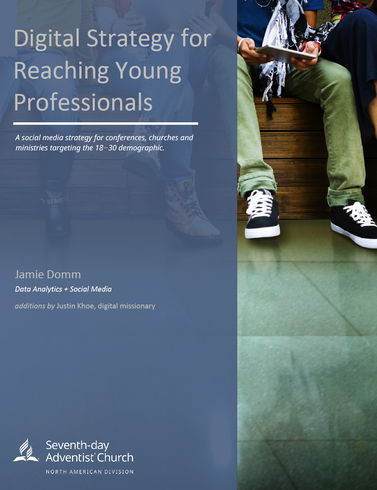

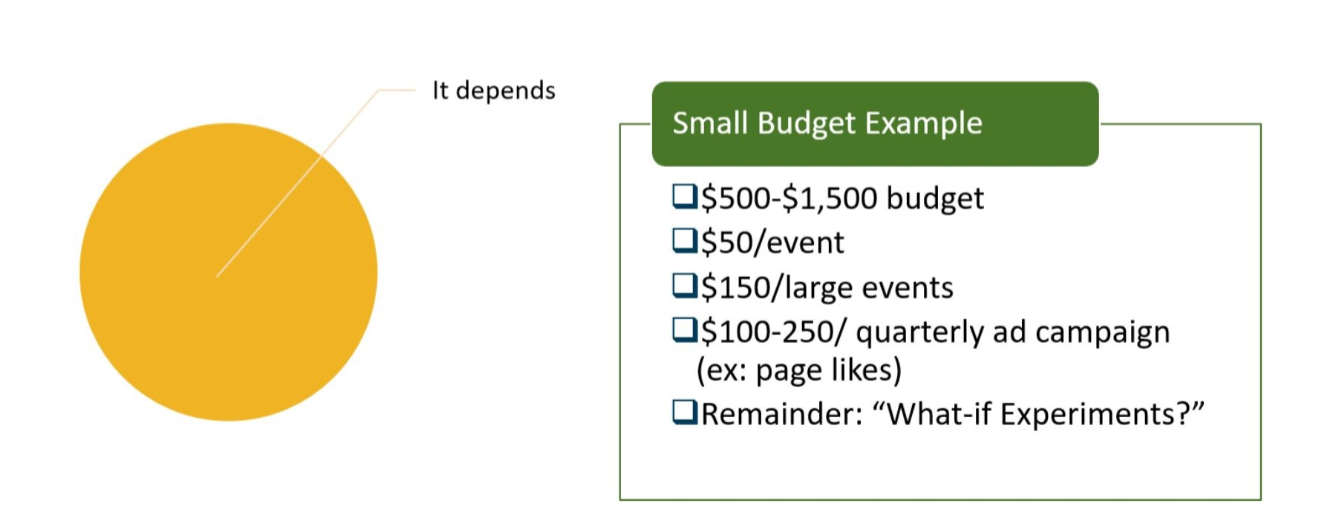




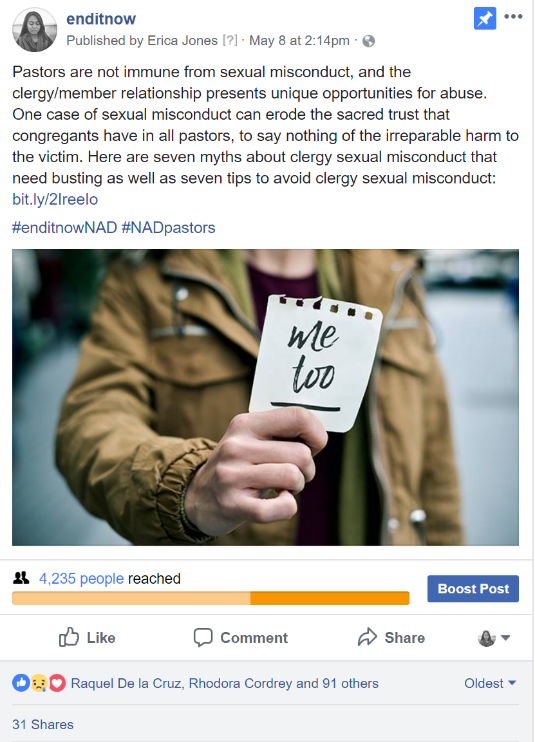

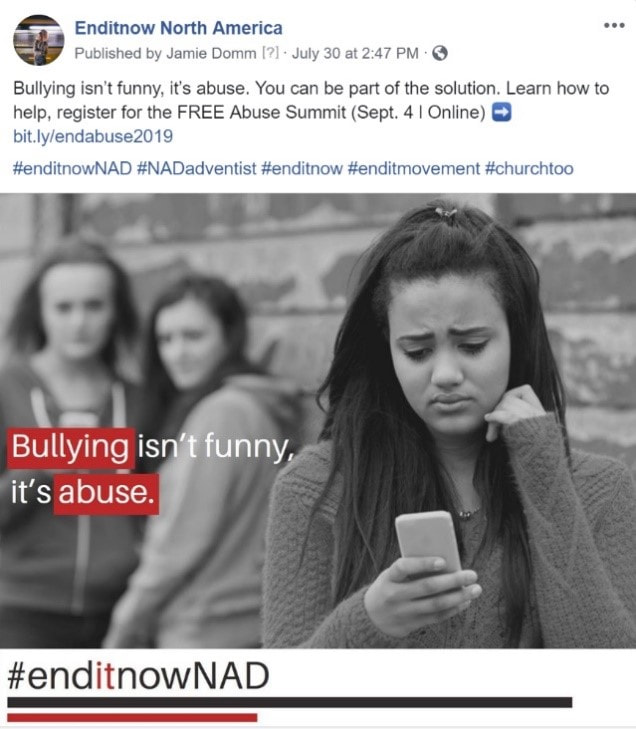
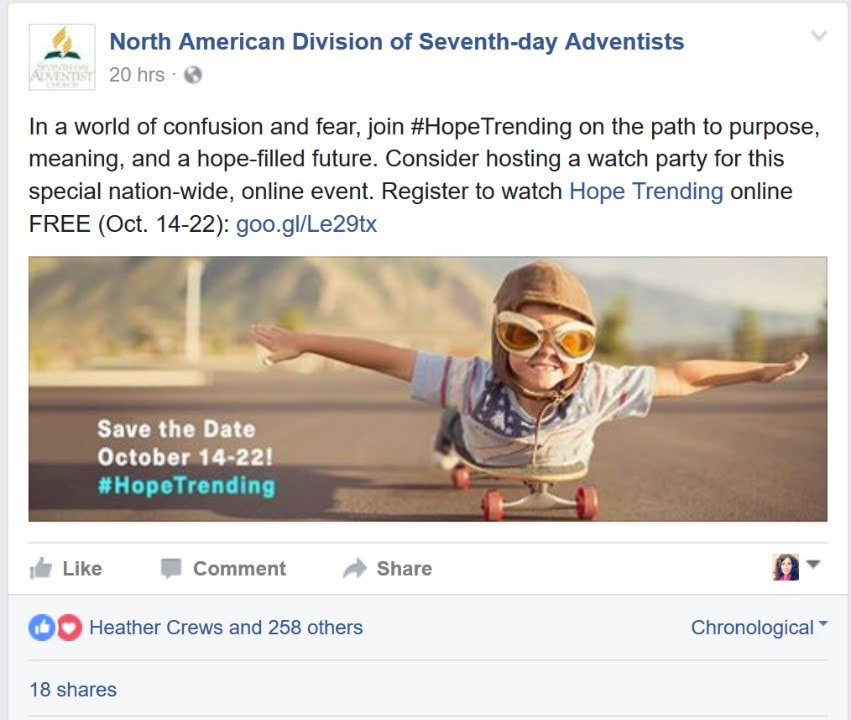



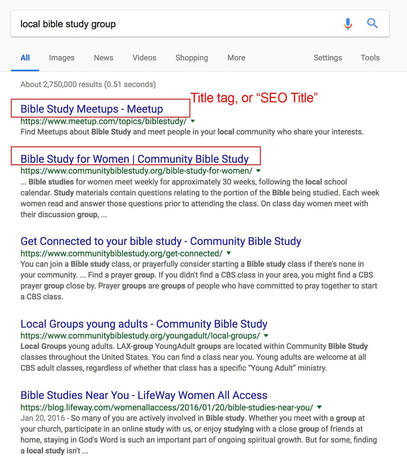
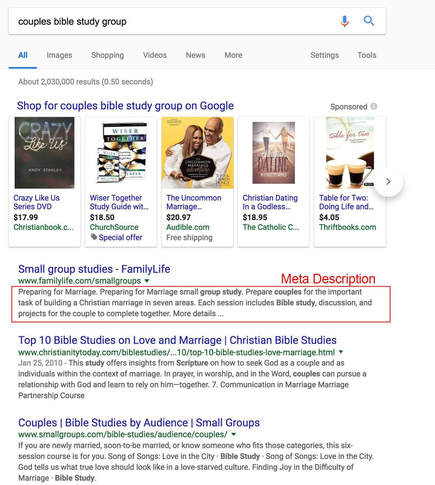
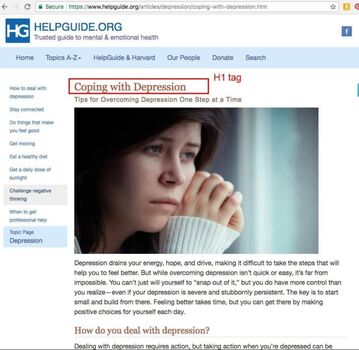
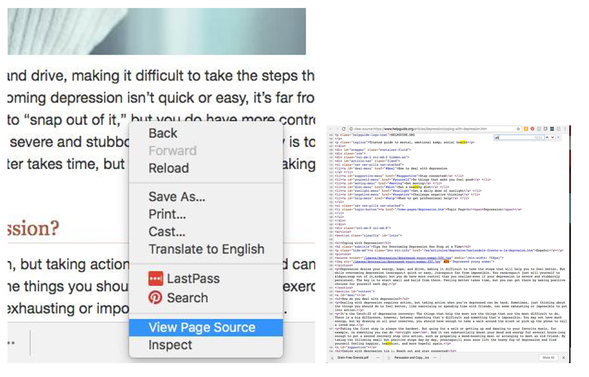


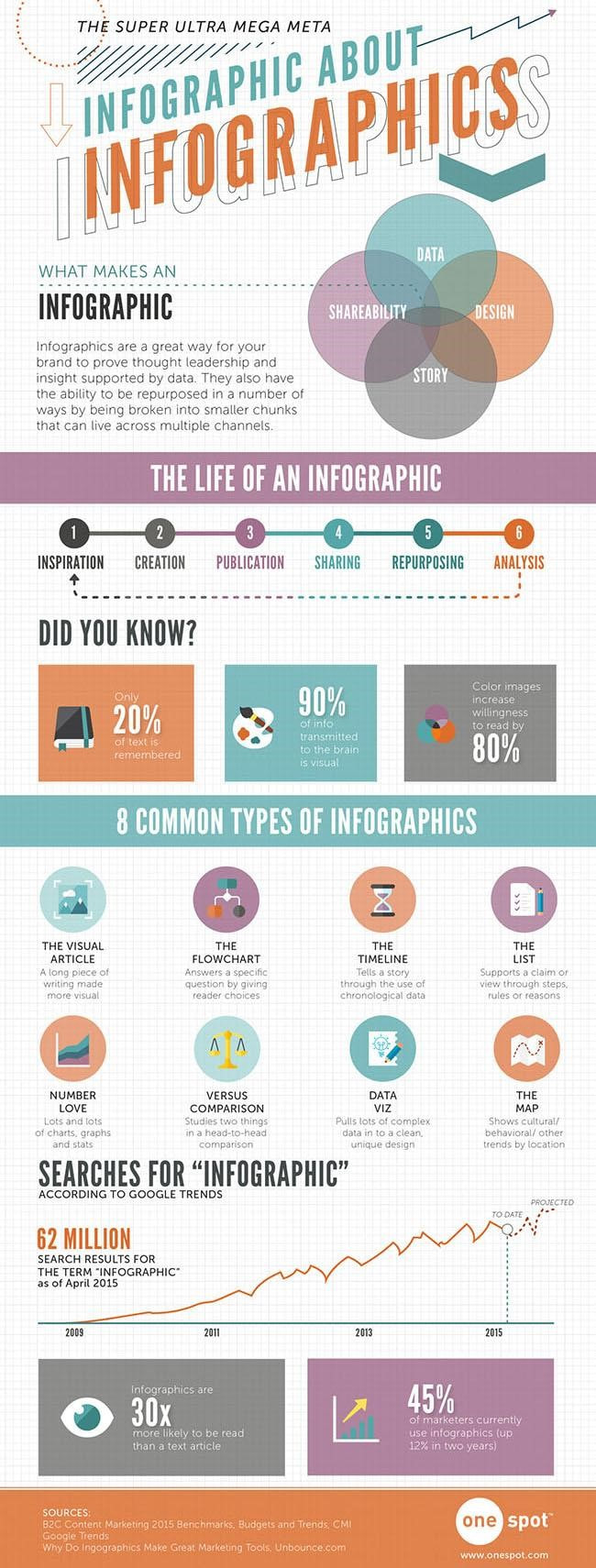

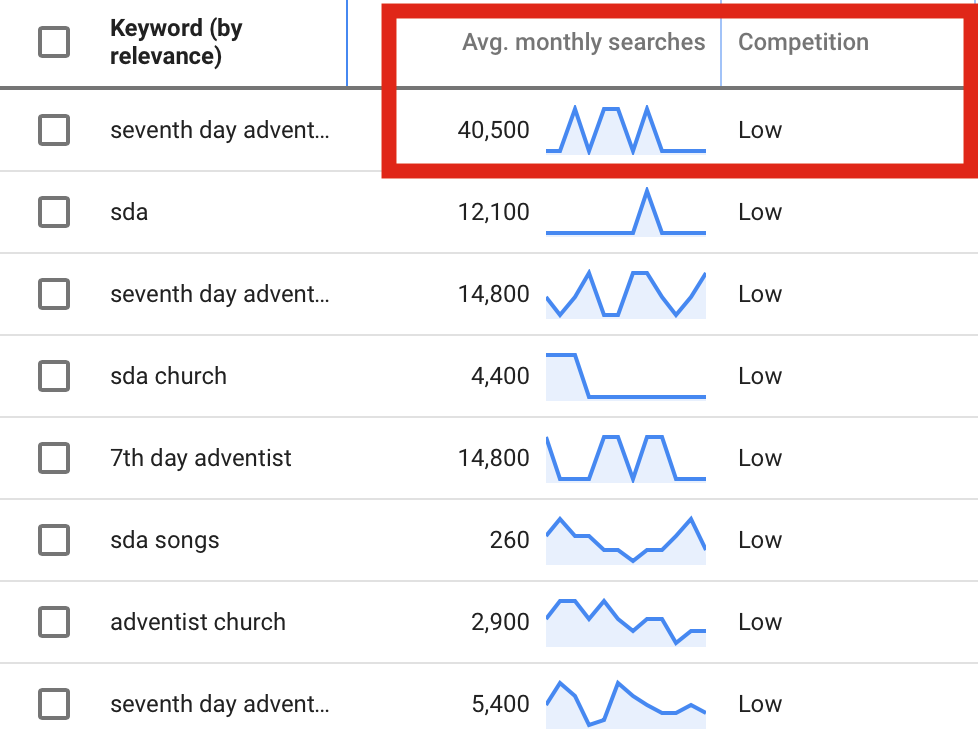

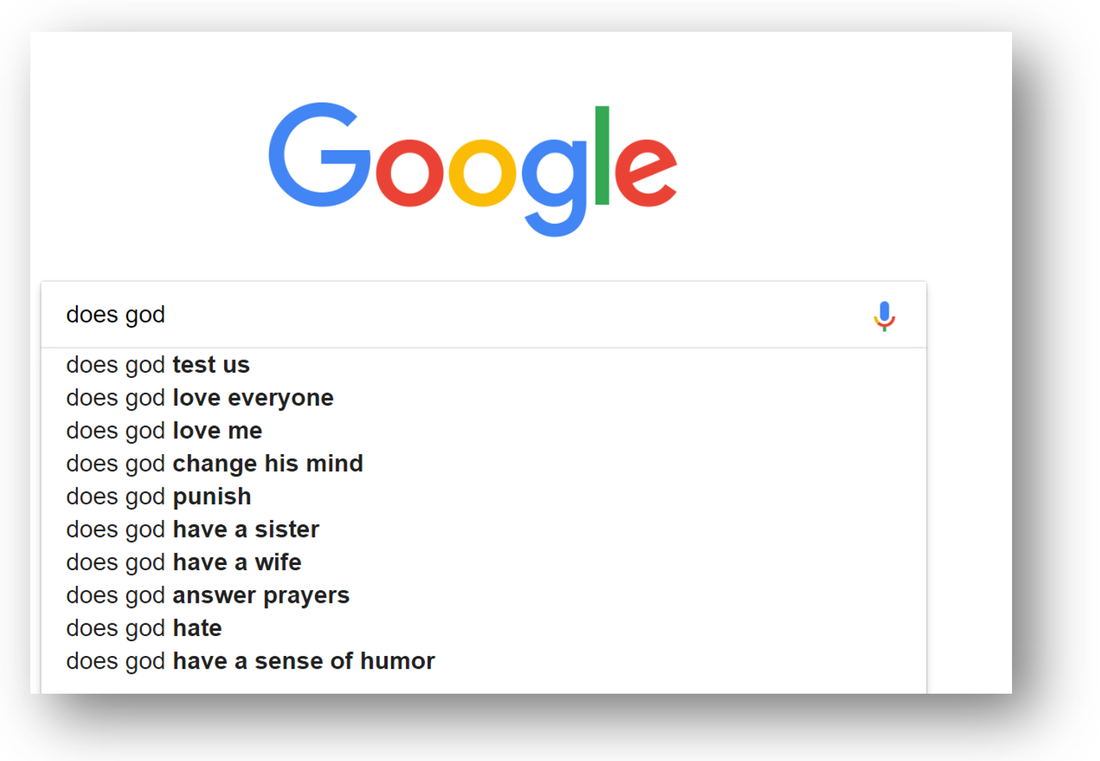
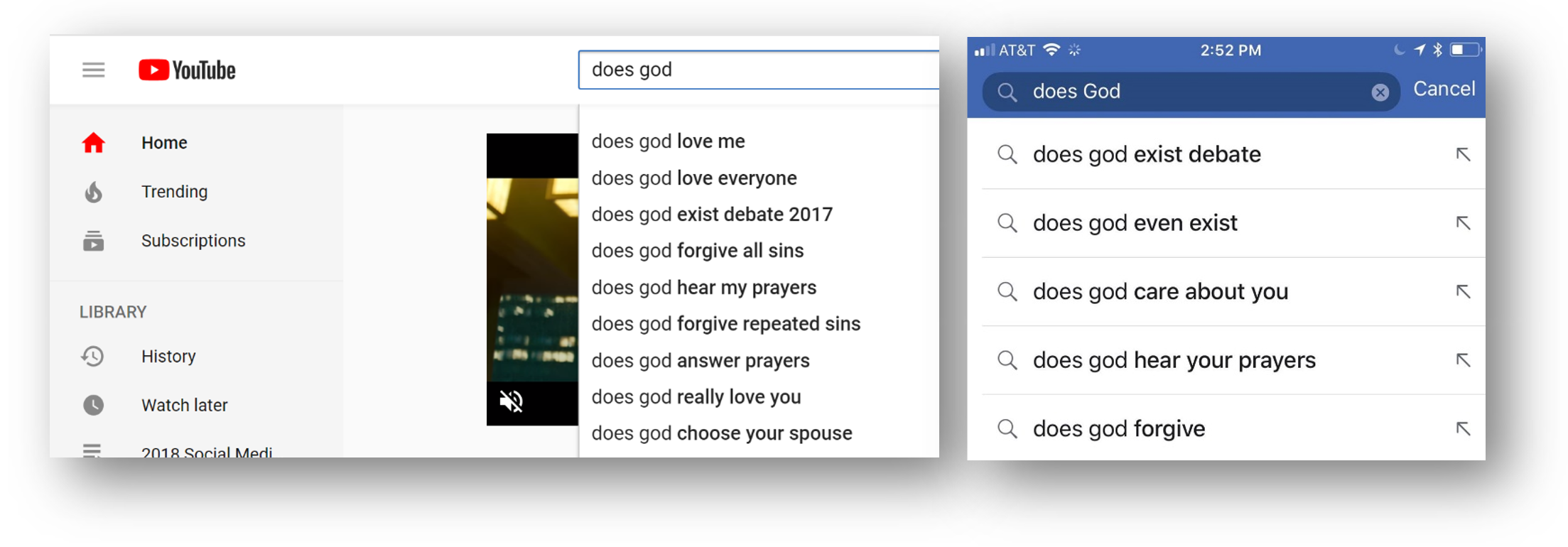
 RSS Feed
RSS Feed